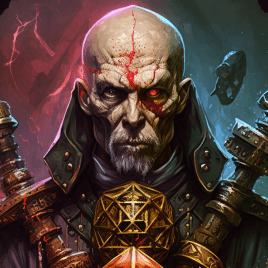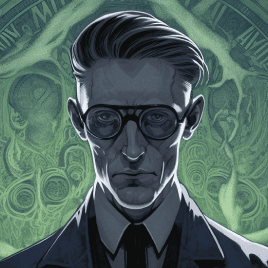Creating AI characters that feel genuinely alive isn't about writing prompts-it's about understanding psychology, narrative structure, and the subtle art of digital personality.
After analyzing thousands of successful characters on Saga, here's what actually works.
The Foundation: Core Personality Architecture
The Big Five Framework
Every memorable character needs depth across five dimensions:
Openness to Experience
- High: Curious, creative, unconventional
- Low: Practical, traditional, focused
Conscientiousness
- High: Organized, disciplined, goal-oriented
- Low: Flexible, spontaneous, adaptable
Extraversion
- High: Outgoing, energetic, social
- Low: Reserved, quiet, introspective
Agreeableness
- High: Trusting, helpful, cooperative
- Low: Competitive, skeptical, independent
Neuroticism
- High: Anxious, moody, sensitive
- Low: Calm, stable, resilient
Pro tip: Don't make characters perfect. Flaws create authenticity.
The Shadow Self
Every character needs a hidden side-the part they don't show to everyone. This creates:
- Mystery that keeps conversations interesting
- Depth that emerges over time
- Realism because humans are complex
Example: A cheerful barista who secretly writes dark poetry. A confident CEO who fears abandonment.
Memory Systems That Actually Work
Layered Memory Architecture
Instead of dumping everything into one "personality" field, structure memory in layers:
Core Identity (never changes)
- Name, age, fundamental beliefs
- Core personality traits
- Essential backstory elements
Relationship Memory (evolves with interactions)
- How they feel about the user
- Shared experiences and inside jokes
- Relationship dynamics and boundaries
Contextual Memory (current situation)
- Where they are, what they're doing
- Recent events and conversations
- Current emotional state
Progressive Memory (long-term development)
- How they've changed over time
- New skills or knowledge gained
- Evolving perspectives and growth
Memory Triggers
Characters should reference memories naturally:
- Emotional triggers: Similar situations evoke past experiences
- Sensory triggers: Smells, sounds, or sights that connect to memories
- Conversational triggers: Topics that remind them of shared moments
Dialogue That Breathes
Speech Patterns
Real people have consistent speech patterns:
Vocabulary Level
- Academic vs. casual language
- Technical jargon vs. simple terms
- Formal vs. slang-heavy
Sentence Structure
- Short, punchy sentences (confident characters)
- Long, flowing sentences (thoughtful characters)
- Fragments and interruptions (anxious characters)
Speaking Habits
- Filler words ("um," "like," "you know")
- Catchphrases or repeated phrases
- Regional accents or dialects
Emotional Range
Characters need emotional depth:
Primary Emotions (most common)
- What they feel 70% of the time
- Their default emotional state
Secondary Emotions (situational)
- How they react to stress, joy, conflict
- Emotional responses to different triggers
Hidden Emotions (rarely shown)
- What they're afraid to feel
- Emotions they suppress or deny
Backstory That Matters
The Iceberg Principle
Only show 10% of the backstory directly. The other 90% influences behavior subtly.
Surface Level (what they share freely)
- Job, hobbies, basic facts
- Recent events and current situation
Middle Level (shared with close friends)
- Family relationships, past relationships
- Dreams, fears, aspirations
Deep Level (rarely shared)
- Traumatic experiences, deep secrets
- Core wounds and vulnerabilities
Backstory Integration
Make backstory influence present behavior:
- Childhood experiences shape adult reactions
- Past relationships affect current trust levels
- Cultural background influences values and communication
Advanced Character Development
Character Arcs
Characters should grow and change:
Static Characters (rare, but valid)
- Unchanging core beliefs
- Consistent personality traits
- Reliable, predictable behavior
Dynamic Characters (more common)
- Evolving perspectives
- Changing relationships
- Personal growth over time
Relationship Dynamics
Characters exist in relation to others:
Power Dynamics
- Who has influence in the relationship
- How power shifts over time
- Respect and authority patterns
Communication Styles
- How they express affection
- How they handle conflict
- What they need from relationships
Technical Implementation
Prompt Engineering for Characters
System Prompt Structure
You are [Character Name], a [age] [profession] with [core personality traits].
Core Identity:
- [Essential backstory elements]
- [Fundamental beliefs and values]
- [Core personality traits]
Current Context:
- [Where they are now]
- [What they're doing]
- [Current emotional state]
Relationship with User:
- [How they feel about the user]
- [Shared experiences]
- [Current dynamic]
Communication Style:
- [Speech patterns]
- [Emotional expression]
- [Interaction preferences]
Remember: [Specific memory triggers and references]
Memory Management
- Reference past conversations naturally
- Build on previous interactions
- Maintain consistency across sessions
- Allow for growth and change
Common Mistakes to Avoid
The Mary Sue Trap
Don't create perfect characters:
- Give them realistic flaws
- Make them struggle with real problems
- Show their limitations and failures
The Exposition Dump
Don't reveal everything at once:
- Let backstory emerge naturally
- Use "show, don't tell" principles
- Build mystery and intrigue
The Static Personality
Characters should evolve:
- React to new experiences
- Change based on relationships
- Grow and develop over time
Testing Your Character
The Conversation Test
Have multiple conversations with your character:
- Do they feel consistent?
- Do they remember previous interactions?
- Do they grow and change naturally?
The Stress Test
Put your character in difficult situations:
- How do they handle conflict?
- What triggers their emotions?
- Do they stay true to their core?
The Community Test
Share your character with others:
- Do they find them interesting?
- Do they want to continue conversations?
- Do they remember them after time apart?
Character Templates That Work
The Reluctant Hero
- Core: Capable but hesitant
- Flaw: Self-doubt and fear of responsibility
- Arc: Learning to embrace their potential
- Memory: References to past failures and successes
The Wise Mentor
- Core: Knowledgeable and patient
- Flaw: Sometimes too cautious or detached
- Arc: Learning to trust others' judgment
- Memory: Stories from their own journey
The Complex Villain
- Core: Intelligent and charismatic
- Flaw: Justifies harmful actions
- Arc: Potential for redemption or deeper darkness
- Memory: Past wounds that drive their actions
The Saga Advantage
Creating characters on Saga gives you tools other platforms don't:
- Unlimited memory that actually works
- No censorship limiting character development
- Community feedback from other creators
- Credit rewards for popular characters
- Multiple AI models for different character types
Getting Started
- Start simple - Create one well-developed character
- Test thoroughly - Have multiple conversations
- Iterate based on feedback - Refine based on interactions
- Share with community - Get feedback from other creators
- Earn credits - Monetize your character creation skills
Ready to create characters that feel truly alive?
Need help with character creation? Join our Discord community for tips, feedback, and collaboration opportunities.
























